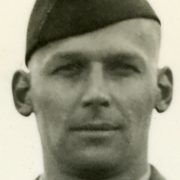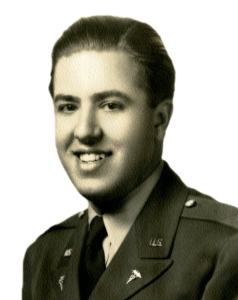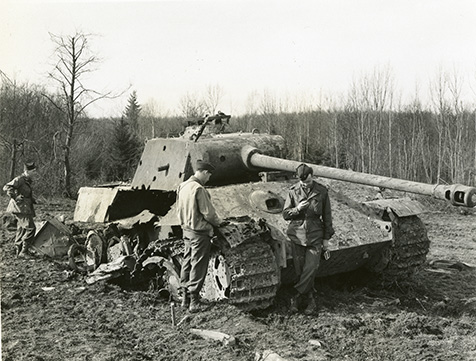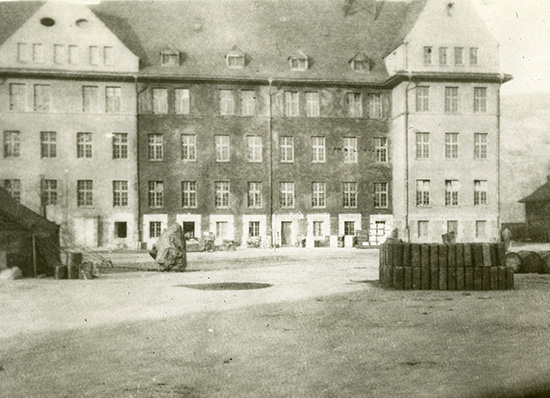 No letter from René on December 10, 1944. Here’s an excerpt from the journal of Dr. Philip Westdahl, describing their move from Epinal to Mutzig, France. In his personal journal, Phil was able to describe his experiences in the 59th Evac. with specifics (place names, information about the enemy) that, because of censorship rules, René was not able to disclose in his letters to his parents.
No letter from René on December 10, 1944. Here’s an excerpt from the journal of Dr. Philip Westdahl, describing their move from Epinal to Mutzig, France. In his personal journal, Phil was able to describe his experiences in the 59th Evac. with specifics (place names, information about the enemy) that, because of censorship rules, René was not able to disclose in his letters to his parents.
We left Epinal on “Pearl Harbor Day” December 7th, 1944. It was a terrifically cold day and we were grateful to be riding in ambulances. Our route took us East through all the hard-fought battle ground from which so many of our patients had come to us while in Epinal.
The Vosges mountain and forest area between Bruyeres and St. Die des Vosges resembled the type of country along the Skyline Boulevard down in the vicinity of the stretch between the Woodside turnoff and Saratoga. The signs of battle were quite evident along the way; hardly a tree failed to show a nick of some degree, and in many areas whole groups of trees were shattered completely, their frayed stumps standing up like so many bushels of corn. This was the country the boys described as “rugged”, and from what we could see they were not exaggerating. Here and there we saw remains of German road blocks, piles of large logs baled together with heavy cable wire.
East of St. Die we became aware of the proximity to the German border. In spite of the innumerable French tri-color flags with their Free French “Cross of Lorraine,” the names of the towns, as well as most of the signs within towns and along the road were all German.
We finally reached our destination, Mutzig, a small town about 12 miles west of Strasbourg. The town itself is insignificant, but it was the site of a large German garrison, which only 2 days before our arrival had been occupied by a pocket of resisting “Krauts” who had been dislodged by the ingenuity of our American infantrymen.
Our boys had loaded a captured German vehicle with “beaucoup” TNT and sent it on its way to drive a tremendous hole in the defenses of the fort adjoining the garrison. That proved to be the undoing and the “Krauts” surrendered. It was a wonderful strategic move, but the only difficulty was that it succeeded in shattering the windows and tile roofs of the barracks adjoining the fort, which was to be our hospital area. Consequently we spent our first day picking out quarters with an intact ceiling and proceeded to patch the shattered windows with cardboard. Once this was accomplished, our quarters were quite comfortable, complete with a stove in each room.
The largest of the buildings in the group that comprised the garrison was originally a French barracks, but had been occupied by the Germans for the past 5 years. It was an old 4-story building with the usual high, steep, slanting roof and innumerable little projecting attic windows.
Every hallway was liberally painted with German military insignia, flags, metals, such as the iron cross, crossed rifles with a German helmet at their crossing point, the Nazi swastika, and last but not least, mottoes of the German army. Typical of these was, “Deutchland ist da wo dete starke herze sind” (Germany is where the strong hearts are).
There were also signs indicating the direction of the air raid cellars “zum Luftschultz kellar.” These cellars were quite comfortable spots, also painted, but with rather pretty scenes of German life, murals of the sort we might expect to find at home.
.



